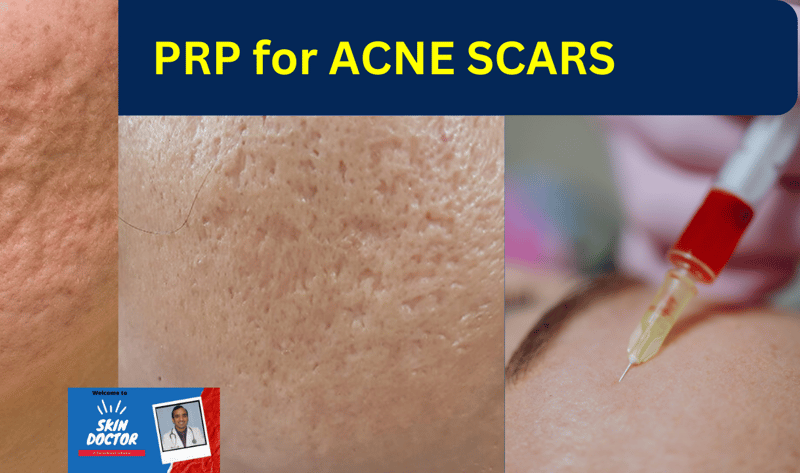Is PRP good for acne scars
PRPor platelet rich plasma therapy is an excellent mode of treatment for repairing small acne scars watch video by clicking this link : https://youtu.be/_oEMEnPGVoo
Dr.Sujith Karimbil
8/18/20232 دقيقة قراءة
watch the Prp procedure being done
Click here to watch now https://youtu.be/_oEMEnPGVoo
Harnessing Platelet-Rich Plasma (PRP) for Acne Scar Treatment: A Natural Approach to Skin Restoration
Acne scars can be a lasting reminder of battles fought long after breakouts have subsided. For those seeking a natural and effective solution, Platelet-Rich Plasma (PRP) treatment has emerged as a promising option. This revolutionary technique not only addresses acne scars but also harnesses the body's innate healing abilities to rejuvenate and restore the skin. Let's delve into the world of PRP treatment for acne scars and unveil how it works to rejuvenate your skin.
Understanding Acne Scars: Acne scars are the result of the body's efforts to repair damage caused by severe inflammation during acne breakouts. These scars can range from shallow depressions to deep, pitted scars. Conventional treatments have shown varying levels of success, prompting the exploration of alternative approaches like PRP therapy.
Platelet-Rich Plasma (PRP): What Is It? PRP treatment is a natural approach that utilizes the body's own healing mechanisms. Platelets, tiny blood components rich in growth factors, are harvested from your own blood and concentrated to create PRP. This concentrated solution is then injected into the targeted areas of the skin, initiating a regenerative response that promotes collagen production and tissue repair.
How PRP Works for Acne Scars: PRP treatment for acne scars involves a multi-step process:
Blood Collection: A small amount of your blood is drawn, typically from your arm.
Processing: The blood is then processed to separate the platelet-rich plasma from other blood components.
Preparation: The PRP is prepared for injection, ensuring that it is sterile and ready for treatment.
Injection: The PRP is carefully injected into the acne scar sites, stimulating collagen production and tissue regeneration.
Healing: Over time, the newly generated collagen helps to fill in the scars and improve the overall texture and appearance of the skin.
Benefits of PRP Treatment: PRP treatment offers several benefits for acne scar patients:
Natural Healing: PRP harnesses your body's own healing potential, reducing the risk of adverse reactions.
Minimal Downtime: PRP is a minimally invasive procedure, and most patients can resume their regular activities shortly after treatment.
Improvement Over Time: While results are not immediate, gradual improvement occurs as collagen production is stimulated.
Enhanced Skin Texture: PRP treatment not only addresses scars but also enhances the overall texture and quality of the skin.
Is PRP Treatment Right for You? PRP treatment is generally well-tolerated, but a consultation with a skilled dermatologist is essential to determine its suitability for your specific case. Patients with realistic expectations and a commitment to follow-up treatments often achieve the best results.
Conclusion: Platelet-Rich Plasma (PRP) treatment offers a natural and promising approach to tackle acne scars. By tapping into the body's inherent healing abilities, PRP therapy promotes collagen synthesis and tissue repair, leading to improved skin texture and reduced scarring. If you're seeking a safe and effective way to rejuvenate your skin and bid farewell to acne scars, consult a qualified dermatologist to explore the potential benefits of PRP treatment. Your journey to smoother, more radiant skin could be just a few appointments away.


